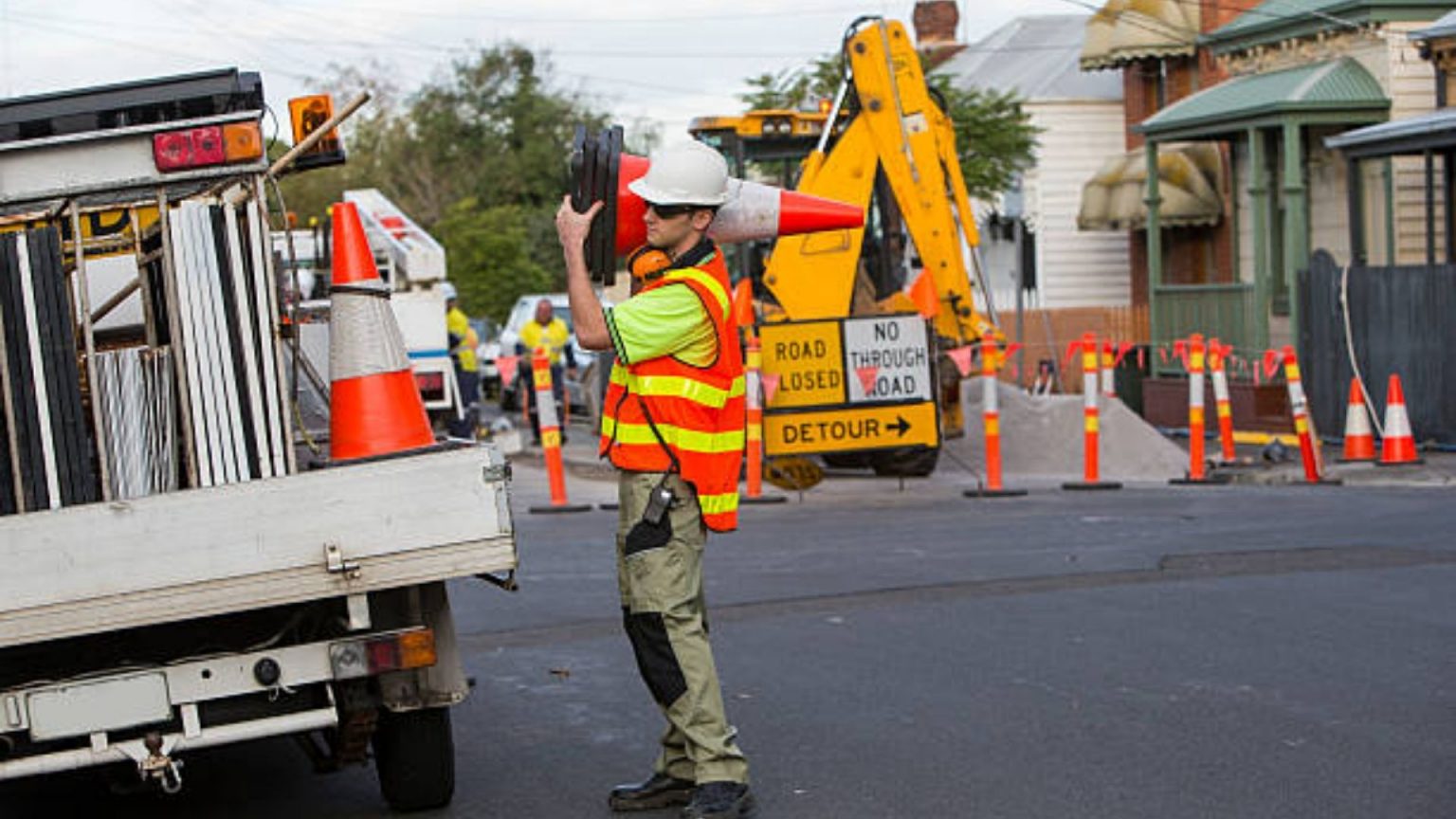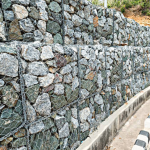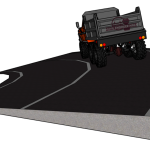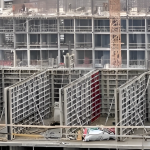
What is Traffic Management?
Traffic management is the organization, arrangement, guidance, and control of stationary and moving traffic, including automobiles, bicycles, and pedestrians, within a construction area. Proper traffic management improves the safe, orderly, and efficient flow of people and commodities while simultaneously seeking to safeguard the quality of the local environment.
Traffic management (often known as road traffic control) is the process of diverting vehicles and pedestrians around with some type of interruption. This might be a construction site, an accident, a community event, tree removal, road surface, traffic congestion, or anything else that could endanger or disrupt a vehicle or pedestrian.
Traffic management involves supporting road workers by providing protective equipment such as cones and barrier fences, as well as installing traffic signals and redirecting traffic through a sequence of road closures and diversions.
Read also: Pavement Markings | Types of Pavement Markings| Roadway Marking
Road Signs
Why is traffic management important?
The following are some of the reasons why traffic management is important in every road construction project:
1. Alert locals
When automobiles and pedestrians approach a construction zone, a proper traffic management strategy will effectively alert them. Locals who pass through the area on a regular basis are not used to having their route disturbed, so alerting both local and non-local drivers and pedestrians is essential to ensuring that everyone pays more attention to their surroundings.
2. Reduced Vehicle Speed
Drivers must be aware of when they must slow down, when lanes will merge, and when the road will narrow. While speeding through a construction zone is plainly dangerous, an effective traffic management strategy will give drivers plenty of warning that they should slow down before approaching the construction zone.
3. It allows for faster completion of work.
Creating a safe work environment helps construction workers concentrate on their task rather than worrying about possible automobile accidents. As a result, the workers will be able to work more rapidly, completing the job considerably faster than if they were preoccupied with traffic and pedestrians in the area.
4. Ensures worker safety
Since employers are responsible for worker safety, implementing an efficient traffic management strategy will help to maintain compliance with worker health and safety regulations while working on your construction project.
5. Shortens traffic delays
A comprehensive traffic control strategy will help prevent motorists from being stuck in traffic for hours on end. Whereas all roadwork construction projects cause some disturbances to regular traffic flow, the strategy will help keep things flowing smoothly and prevent significant delays.
What is active traffic management?
Active traffic management refers to a system that includes two, three, or four-way traffic lights as well as a more complex urban traffic control (UTC) system. Passive traffic control, such as lane closures, is the polar opposite of active traffic control.
What is a lane closure?
When one or more lanes of a motorway or dual carriageway are closed, it is called a “lane closure.” This is mainly due to highway maintenance or repairs. Lane closures might be “fixed,” “temporary,” or “rolling.”
What is a rolling road closure?
A rolling road closure is a temporary barricade that moves. Cycling races, parades, and other events frequently employ rolling roadblocks. They’re less disruptive than temporary road closures since they merely obstruct traffic to allow vehicles to pass.
A rolling lane closure might occur as a result of highway workers fixing the verge.
What is Contraflow?
Contraflow is when traffic is relocated to the opposing side of a road to share with vehicles travelling in the opposite direction. This is frequently required on highways to allow for lane closures while resurfacing work is being done.
Who controls traffic lights?
Traffic lights are typically controlled by automated sensors or timers, although in rare situations they will be controlled by a local controller.
What is give and take traffic management?
‘Give and take’ traffic management involves closing off one side of a road and ‘tapering’ traffic into a single lane. When the road is clear, drivers pass at their own discretion.
Give and take is not ideal for places with heavy traffic or fast-moving vehicles since drivers decide when it is safe to pass. Only routes with a speed restriction of 30 mph or less can employ give and take traffic management.
The strategy is also limited to areas where vehicles can plainly see both ends of the site—and the distance between them cannot exceed 50 meters.
What are stop and go boards?
Stop and go boards are two-sided signs stating “stop” on one side and “go” on the other. Although they must be used with several road signs, they are a highly portable method of traffic management.
One board can be used to regulate traffic flow at small roadworks sites (20m or less). For larger sites, two boards are required, one at each end. While traffic clears, both signs can read’stop.’
Stop and go boards can be controlled remotely or manually by traffic management personnel. The remote-controlled boards may only be used during the day; at night, the boards must be operated manually.
Stop and go boards must be illuminated directly and consistently at night.
What are portable lights?
Portable traffic lights are mobile traffic signals that are used to manage traffic around road closures, diversions, and accidents.
There are several different kinds of mobile traffic lights. Some will use timers, changing from red to green after a set time frame.
Particularly modern lights (for example, those that use Pike’s Auto Green technology) will monitor traffic conditions and alter timings accordingly. This results in smoother traffic flow since sparse traffic in one direction does not receive the same amount of ‘green time’ as heavy traffic in the other direction.
What are temporary lights?
Temporary traffic lights are more durable than portable lights. They are designed to appear more permanent than transportable systems and are typically placed for projects that take a long time – sometimes months.
What is a 15-minute temporary obstruction?
A temporary obstacle is a temporary road closure. It is marked with a ‘Temporary Obstruction 15 Minutes Delay’ sign. The maximum closure period is 15 minutes, as shown by the sign, but workers will try to reopen the road sooner if it is safe.
Workers receiving items on a narrow road or pulling down a tree into the lane may cause temporary obstructions.
Since this type of traffic control is inconvenient, it is only used when providing an alternate route is impractical.
What are mobile works?
Mobile work is carried out from a slow-moving vehicle. They involve services such as hedge trimming and weed spraying.
Mobile workers need traffic control that can keep up with them.
To keep traffic flowing safely near highway workers, traffic control operatives will often employ a combination of road signs, special vehicles, and handheld signs.
Similar methods are used for traffic control around short-duration events that include up to an hour-long stoppage. Pothole repairs, sewer jetting, and streetlight maintenance are examples of short-term activities.
What are traffic convoy systems?
A convoy system for traffic management is a vehicle that leads traffic through a construction site in both directions.
It is used when regular procedures are not viable, mainly due to a limited highway. For convoy traffic control, small, specialized vehicles are utilized.
What is high speed traffic management?
High-speed traffic management refers to traffic control on high-speed dual carriageways and motorways with or without a hard shoulder. High-speed traffic management frequently necessitates the employment of Impact Protection Vehicles (IPV), Portable VMS (variable message signs), Contraflow systems, lane closures, hard shoulder closures, and other techniques.








